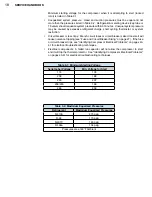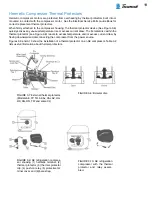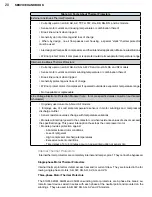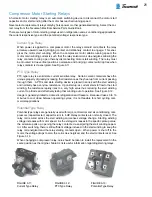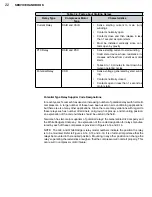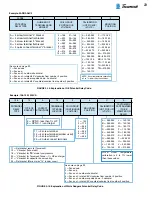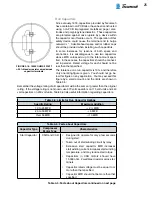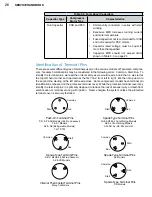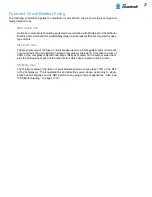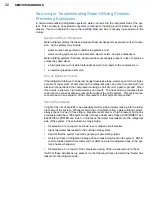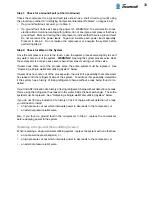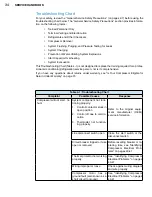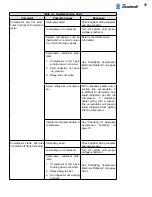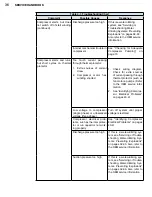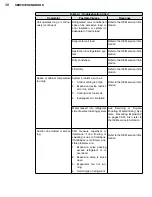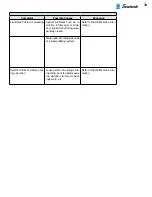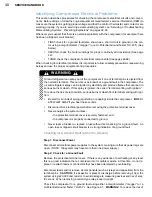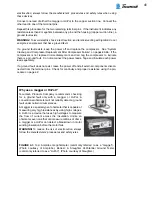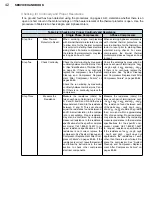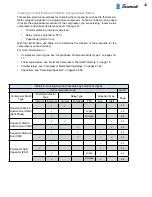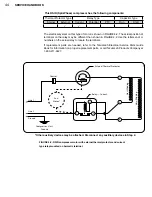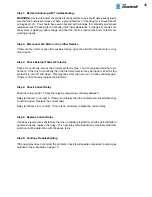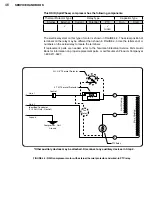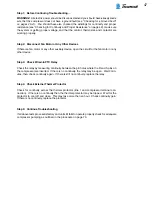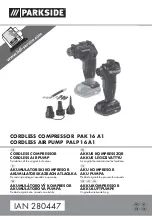
32
SERVICE HANDBOOK
Systems at Risk of Explosion
Water-utilizing systems that have single-wall heat exchangers may present a risk of explo-
sion. Such systems may include:
•
water source heat pump/air conditioning systems, and
•
water cooling systems such as icemakers, water coolers, and juice dispensers.
Water-utilizing systems that have single-wall heat exchangers present a risk of explosion
unless they have either:
•
a high pressure cut-out which interrupts power to ALL leads to the compressor, or
•
an external pressure relief valve.
How an Explosion Occurs
If the refrigerant tubing in the heat exchanger develops a leak, water can enter the refriger-
ant side of the system. Water entering the refrigerant side can come in contact with live
electrical connections in the compressor causing a short circuit or a path to ground. When
this occurs, extremely high temperatures can result. The heat build-up creates steam
vapor that can cause excessive pressure throughout the entire system. This system pres-
sure can lead to an explosion of the compressor or other system components.
Service Procedures
In light of the risk of explosion, be especially alert for signs of water leaking into the refrig-
erant side of the system. Whenever servicing or troubleshooting a water-utilizing system,
always check to see if it has either a pressure relief valve or a high pressure cut-out as
previously described. If the system does not have at least one of these, DISCONNECT ALL
ELECTRICAL POWER and look for indications that water has leaked into the refrigerant
side of the system. These indications may include:
•
Observation of or a report of a blown fuse or tripped circuit breaker.
•
Signs that water has leaked to the outside of the system.
•
Reports that the system has made gurgling or percolating noises.
•
A history of loss of refrigerant charge without a leak being found in the system. NOTE:
common leak detection methods will not detect a water-to-refrigerant leak in the sys-
tem’s heat exchanger(s).
•
Observation of or a report of the compressor giving off an unusual amount of heat.
If ANY of these indications are present, do the following checks to determine if water has
leaked into the refrigerant side:
Servicing or Troubleshooting Water-Utilizing Systems:
Preventing Explosions
In certain water-utilizing refrigeration systems, water can leak into the refrigerant side of the sys-
tem. This can lead to an explosion of system components, including but not limited to, the com-
pressor. If such an explosion occurs, the resulting blast can kill or seriously injure anyone in the
vicinity.
Summary of Contents for AH5540E
Page 1: ...Hermetic Compressor Service Handbook Wholesale Distribution North America...
Page 2: ......
Page 3: ...Hermetic Compressor Service Handbook Ann Arbor MI 48108 REV 3 11...
Page 4: ......
Page 8: ......
Page 9: ...Chapter 1 General Service Safety Precautions...
Page 16: ......
Page 17: ...Chapter 2 Model and Application...
Page 22: ......
Page 23: ...Chapter 3 Compressor Motor and Component...
Page 36: ......
Page 37: ...Chapter 4 Servicing...
Page 38: ...30 SERVICE HANDBOOK...
Page 79: ...71...
Page 80: ......
Page 81: ...Chapter 5 Installation and Replacement...
Page 96: ......
Page 97: ...Liquid refrigerant migration to compressor FIGURE 6 1 Chapter 6 Operation...
Page 108: ......
Page 109: ...Appendix...
Page 113: ...105 Reciprocating Compressor FIGURE A 2 Internal view of typical air conditioning compressor...
Page 118: ...110 SERVICE HANDBOOK Notes...
Page 119: ......

